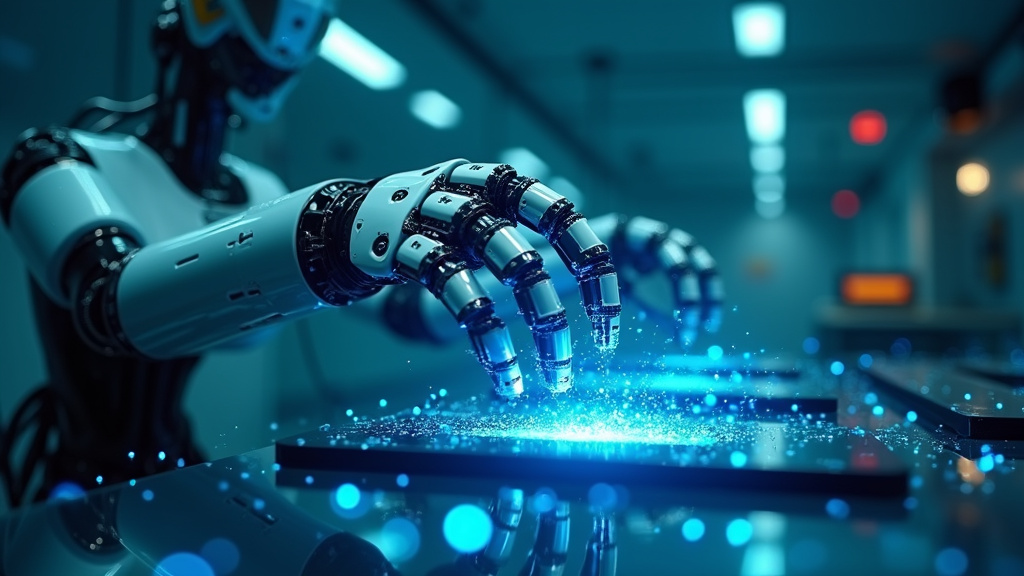Quantum Leap in Robotics: Shibaura, Waseda, and Fujitsu Unveil AI-Powered Robot Posture Optimization
TOKYO, JAPAN – August 25, 2025 – In a development poised to redefine robotic capabilities and push the boundaries of artificial intelligence, Shibaura Institute of Technology (SIT), Waseda University, and Fujitsu Limited today announced a groundbreaking advancement in robot posture control utilizing the power of quantum computing. This innovative approach promises to dramatically enhance the efficiency and accuracy of calculating how multi-joint robots position themselves, marking a significant stride toward creating more agile, precise, and intelligent autonomous systems. The announcement places this breakthrough firmly as a top trending technology in the rapidly evolving landscape of artificial intelligence and robotics.
The Inverse Kinematics Challenge in Robotics
At the heart of sophisticated robotic movement lies the complex challenge of inverse kinematics. For robots, particularly those with multiple joints mirroring biological structures like human arms or legs, determining the precise angles for each joint to achieve a desired end-effector position is a fundamental, yet computationally intensive, task. The sheer number of possible configurations for a robot with many degrees of freedom means that traditional algorithms often struggle to find optimal solutions quickly. This complexity necessitates iterative calculations, which can consume significant processing time and energy, posing a bottleneck for real-time control and dynamic adaptation in sophisticated robotic applications. For a full-body multi-joint model akin to the human body’s 17 joints, the combinatorial explosion of possible angle combinations makes direct, efficient solutions a formidable hurdle for classical computing.
A Quantum Approach to Enhanced Robot Control
To address these inherent computational demands, the collaborative team from SIT, Waseda University, and Fujitsu has pioneered a novel method that harnesses the unique properties of quantum computing. This sophisticated approach involves a hybrid quantum-classical architecture. The core innovation lies in representing the orientation and position of each robot link – the segments between joints – using qubits, the fundamental units of quantum information. By encoding this crucial positional data into quantum states, the system can explore a vast array of potential configurations simultaneously, a feat that classical bits, limited to states of 0 or 1, cannot replicate.
A key enabler of this quantum advantage is the principle of quantum entanglement. This phenomenon allows qubits to become intrinsically linked, so that the state of one qubit instantaneously influences the state of another, regardless of the physical distance separating them. In this robotic application, entanglement is strategically employed to mimic the interconnectedness of a robot’s joint structure, accurately reproducing how the movement of a “parent” joint influences the positions of “child” joints. This intricate replication of physical dependencies within the quantum circuit dramatically reduces the number of calculations required to solve the inverse kinematics problem, accelerating the convergence toward an accurate solution.
Verification and Performance Gains on Quantum Hardware
The effectiveness of this quantum-driven methodology was rigorously verified through simulations and experiments. Utilizing Fujitsu’s quantum simulator, a powerful tool that mimics quantum computation on classical hardware, the team was able to test their algorithms. Crucially, these methods were also validated on Fujitsu’s 64-qubit superconducting quantum computer, co-developed with RIKEN. The results were compelling: the quantum-enhanced approach demonstrated up to a 43% reduction in positional error compared to traditional methods, coupled with a significant decrease in computational operations. For a complex 17-joint robot model, trial calculations indicated that motion planning could be achieved in approximately 30 minutes, a testament to the enhanced efficiency. Importantly, the research highlights that this method is adaptable for current Noise Intermediate-Scale Quantum (NISQ) computers, signifying its potential for near-term practical implementation.
Synergistic Collaboration Driving Innovation
This significant advancement is the product of a powerful synergy between leading academic research and industrial expertise. Shibaura Institute of Technology, through its Human Robot System Laboratory led by Associate Professor Takuya Otani, and Waseda University, with Professor Atsuo Takanishi at the helm of robotics research, brought their deep understanding of robot mechanics and control theory. Fujitsu Limited, a global leader in information technology and services, contributed its cutting-edge quantum computing hardware and simulation infrastructure, including its advanced 64-qubit quantum machine and ongoing development of larger quantum systems. This collaborative effort showcases how focused partnerships can accelerate the transition of fundamental quantum research into tangible technological solutions.
Broad Impact and Future Applications
The implications of this quantum-enhanced robot posture optimization extend far beyond theoretical calculations. The ability to compute complex movements with unprecedented speed and accuracy paves the way for a new generation of robots capable of highly sophisticated, real-time operations. Potential applications are vast and transformative, including more fluid and natural movements for humanoid robots, enhanced dexterity and precision for robotic manipulators in manufacturing and logistics, and improved navigation and task execution for autonomous systems operating in dynamic and unpredictable environments. Furthermore, the optimization capabilities could lead to significant energy savings in robot operations and enable more complex forms of obstacle avoidance.
This news underscores a pivotal moment where quantum computing is beginning to unlock practical solutions for long-standing challenges in artificial intelligence and robotics. As quantum hardware continues to advance, and as hybrid quantum-classical algorithms become more refined, this research positions itself as a key development in the pursuit of truly intelligent machines. The successful demonstration of efficient inverse kinematics using quantum entanglement firmly establishes this collaborative effort as a top trending advancement, heralding a new era of automation powered by quantum technology and shaping the future of how robots perceive, move, and interact with the world.





